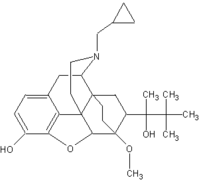"Option Can Increase Number of Patients Seeking Treatment"
The recent U.S. Food and Drug Administration approval of buprenorphine and of a combination product containing buprenorphine and naloxone, developed through more than a decade of research supported by the National Institute on Drug Abuse, National Institutes of Health, has opened the door to mainstream medical treatment for people addicted to opiates, such as heroin and morphine. Now, results of a 2-part, multicenter, clinical trial published in the September 4 issue of the New England Journal of Medicine, provides additional insight into the utility of this treatment outside the traditional addiction treatment clinic setting.
"Buprenorphine represents a major step forward in the treatment of opiate addiction," says Dr. Nora D. Volkow, NIDA Director. "It allows physicians to treat patients for this disease in the same manner that other people are treated for such other chronic illnesses as diabetes or high blood pressure. Office-based buprenorphine increases the availability of therapy by offering patients greater flexibility in treatment scheduling and integration with the mainstream public for their health services."
"Other agonist therapy for opiate addiction is given in a highly regulated setting, which may dissuade many addicted people from seeking help," say lead authors Dr. Paul J. Fudala and T. Peter Bridge.
Dr. Fudala, of the VA Medical Center and University of Pennsylvania School of Medicine, Philadelphia, and Dr. Bridge, then with NIDA/NIH, were the national co-principal investigators of this 2-part trial. In the 4-week component, participants who received office-based treatment with buprenorphine in combination with naloxone (SUBOXONE) fared significantly better than opiate addicts given a placebo. In the other phase of the study, which lasted up to 1 year, buprenorphine and naloxone were administered together in an office-based setting and observations were made about the practicality of this treatment.
Trial participants received treatment at sites in Boston; Cincinnati; Chicago (Hines), Illinois; Los Angeles; New York City; Philadelphia; San Francisco; West Haven, Connecticut; Baltimore; Miami; New Orleans; and San Juan, Puerto Rico.
Buprenorphine is pharmacologically related to morphine. Although the subjective effects of buprenorphine closely resemble those of other opioids, these effects are less dose-dependent than those drugs and a "ceiling effect" has been demonstrated for many of the actions of buprenorphine. Buprenorphine also appears to have somewhat lower abuse potential than drugs such as morphine, heroin, and similar agents.
"Office-based treatment with buprenorphine is a powerful tool in the repertoire of drug-abuse treatment advances that have resulted from NIDA-supported research," says Dr. Volkow. "It does not replace medications now used to treat opiate addiction, but it will help fill the gap in treatment for the more than 1 million Americans addicted to these drugs."
Health Care Providers wishing to provide buprenorphine to their patients must take 8 hours of training and be certified by the U.S. Department of Health and Human Services' Substance Abuse and Mental Health Services Administration.
The National Institute on Drug Abuse is a component of the National Institutes of Health, U.S. Department of Health and Human Services. NIDA supports more than 85 percent of the world's research on the health aspects of drug abuse and addiction. The Institute carries out a large variety of programs to ensure the rapid dissemination of research information and its implementation in policy and practice. Fact sheets on the health effects of drugs of abuse and information on NIDA research and other activities can be found on the NIDA home page at .
Copyright Nevada Nurses Association Nov 2003
Provided by ProQuest Information and Learning Company. All rights Reserved



